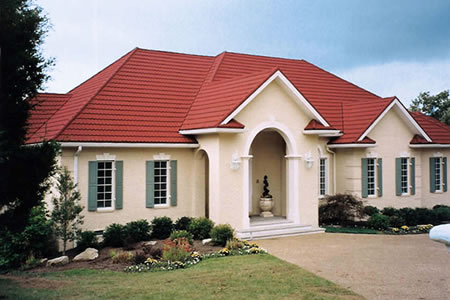Many people see roofing system as a one-time expense and the decision on the specifications is based primarily on costs. It should be noted that choosing the wrong roofing system could incur higher repair and maintenance costs. Fortunately, we could avoid high repair costs by choosing high-performance roofing type. We should also conduct routine preventive measures. In general, the quality of the roofing could be rather high, but the longer life-cycle could easily offset the high, initial investment.
Initial roofing costs may include materials, overhead, labours and any indirect costs. We should consider early investments of the roofing installation, followed by the maintenance and future costs of operations. We shouldn’t also overlook other costs directly caused by roofing system, such as:
- Energy costs: Proper roofing can reduce energy costs needed for air conditioning and heating of the building. In this case, we could choose roofing with extra insulation and reflective membranes.
- Fire hazard: Good quality roof should have proper fire retardance.
- Extended structural durability: Heavier roofing material may require more extensive structural materials.
- Replaceable components: Some roofing system has replaceable components, so if they are damaged; we won’t need to replace it entirely.

Highly cost-effective roof should stand us to the test of time and homeowners should be involved actively in the planning stages, so they can determine the most adequate roofing, based on available requirements. When planning to install a roofing system, we should consider the type of roofing that provides the greatest long-term energy efficiency and performance. We should also consider the climate effects and the weather conditions. The desired life of the roof should be suitable and meet our initial investments. We may also consider the overall resale value of the house. A proper roofing system should have an ideal drainage characteristic. It should also applicable to common maintenance programs.
In this case, we should be clear about our expectations for the roofing system and consider whether there are specific environmental concerns. Also, we need to consider whether the roof should be fire- and wind-rated to specific levels. Once we are able to answer these questions, we could continue the selection process based on the building type, physical characteristics and location. The quality of products should be specifically engineered to ensure high degree of reliability. To do this, we should ensure a good relationship with the supplier and make sure they could provide us with necessary components in the long-term period.
To calculate the overall life-cycle cost of a roofing system, we could subtract the overall salvage cost of the new roofing materials with the overall purchase prices. This allows us to come up with the possible costs of replacement, repair and maintenance. These calculations are needed to forecast the economic life of our roofing system. For more accurate calculation, it may be necessary to consider the effect of inflation and future price increases. In many cases, non-flammable, lightweight, non-organic roofing material could provide us with all-around good investment.























